Climate Change and Migration: Could Marquette County Become a Climate Haven?
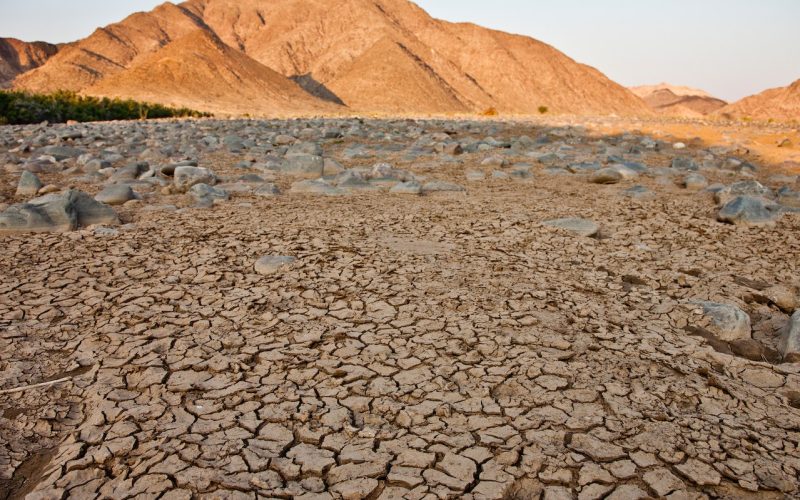
The effects of climate change continue to dominate this summer’s headlines with record breaking heat waves, floods, and wildfires.
In the Southwest, Phoenix broke its record of 18 consecutive days at 110 degrees and hotter, while historic rainfall in New England led to massive flooding. In the Upper Peninsula, air quality alerts were issued due to fires in Canada that have so far burned an area larger than the state of Indiana.
Despite these and other extreme weather events there is little evidence that concerns over climate change are impacting most Americans’ migration behavior. The country’s fastest growing areas for nearly 50 years are in the Sun Belt, which also happens to be most vulnerable to the effects of climate change.
Between 2008 and 2021, Maricopa County, Arizona, which contains Phoenix, has received more elderly migrants (age 65 and over) than any county in the country. Yet the elderly are more susceptible to the effects of extreme heat than other age groups. In 2021-22, Florida had the highest population growth of any state, but it’s threatened by rising sea levels, heat waves and powerful tropical storms. Since 2017, Hurricanes Irma, Michael and Ian have caused nearly $200 billion in damage in the state.
Some Americans are moving to areas that are at lower risk from the effects of climate change. These places can be found along the border with Canada, in the Great Lakes region, and the counties of Central and Northern Appalachia. Within the Upper Midwest, the city of Duluth received attention from the NY Times as a ‘climate refuge’ in 2023, welcoming newcomers escaping California’s wildfires.
One consequence of such moves is ’climate gentrification,’ whereby wealthy individuals locate their primary residence or investment properties in areas considered safer from the worst effects of climate change, and in the process increase property values beyond the means of long-term residents. The remainder of this article identifies other factors besides climate that may lead people to move away from the Sunbelt and examines the degree to which Marquette County is attracting former Sunbelt residents using IRS change of address data.
Migration Push and Pull Factors
Push factors encourage people to leave a place, while pull factors attract migrants. For example, migrants may leave an area because of the threat of wildfires or extreme heat and be attracted to a place that has lower threat levels.
An emerging push factor is the availability of home insurance in disaster prone areas. Earlier this year State Farm announced it would stop accepting applications for business and personal policies in California, due to its ‘rapidly growing catastrophe exposure.’ Other insurers in the state, including Allstate, also halted accepting new clients.
Farmers Insurance announced they will no longer provide existing or new coverage in Florida. Many of Florida’s small insurance companies have gone bankrupt in the wake of losses from hurricane damage, while the state’s home insurance rates have increased at a faster rate than in any other state since 2015. In Louisiana, heavy property losses from Hurricanes Laura (2020) and Ida (2021) have resulted in a dozen insurers voluntarily withdrawing from the state.
Another potential push factor is the increased cost of housing. The decades long drought in the Southwest means water is in short supply. Earlier this year the state of Arizona determined that there is not enough groundwater for all the future home construction that has been approved in the Phoenix area, and announced plans to stop developers from building some new subdivisions. This means that cities and developers will have to purchase water rights (from farmers and Native Americans living on reservations) to support future development, which will add to the cost of home construction.
At the same time, new building codes to improve home insulation against the heat are adding to construction costs.
Marquette County: People Moving In, People Moving Out
Among Marquette county’s pull factors are its four-season climate and spectacular natural environment. In the past, these and other factors have not been strong enough to attract people to offset ongoing population decline.
IRS change of address data show that among interstate migrants in 2017, 2018 and 2019, there was a net loss of 230 households (Tables 1 and 2). These data also show a gradual decline in the number of households leaving Marquette County for another state; in 2017, 683 left, by 2021 the number was 618 (Table 1).
During the same period, the number of households moving to the county was relatively unchanged at approximately 579 for 2017, 2018 and 2019, but in 2020-21, the figure jumps to 718 (Table 2). Combining the two sets of in and out-migration data shows a net gain of 100 households for the 2020-21 period. This represents a significant turnaround from the long-term trend of net losses from interstate migration.
So where are the most recent interstate arrivals to Marquette County coming from? In 2020-21 other Midwestern states accounted for the largest share of incomers at 43 percent, followed by the South (27%), West (24%) and East regions (6%). From a climate change perspective, Southern and Western states accounted for 47 percent of households moving to Marquette County in 2017, by 2020-21 the corresponding figure had increased to 52 percent.
During this most recent period, 329 Marquette County households moved to the South and West, while 370 households moved back to the County for a net gain. The total adjusted gross income for the newcomers was over $4.5 million higher than the households that left, providing a welcome boost for the local economy.
Just as one swallow does not make a spring, it would be premature to conclude that these data support Marquette County becoming a climate haven. Nevertheless, the recent gain in net interstate migration, particularly from Southern and Western states suggests that some people view it as a potential climate refuge.
If the economic and environmental costs of residing in the Sunbelt continue to increase the recent gain from migration may serve as a harbinger of things to come.

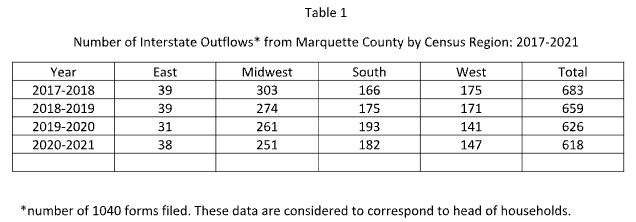
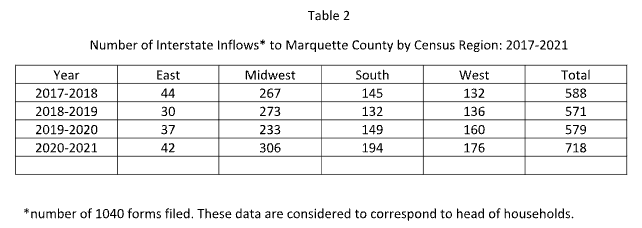


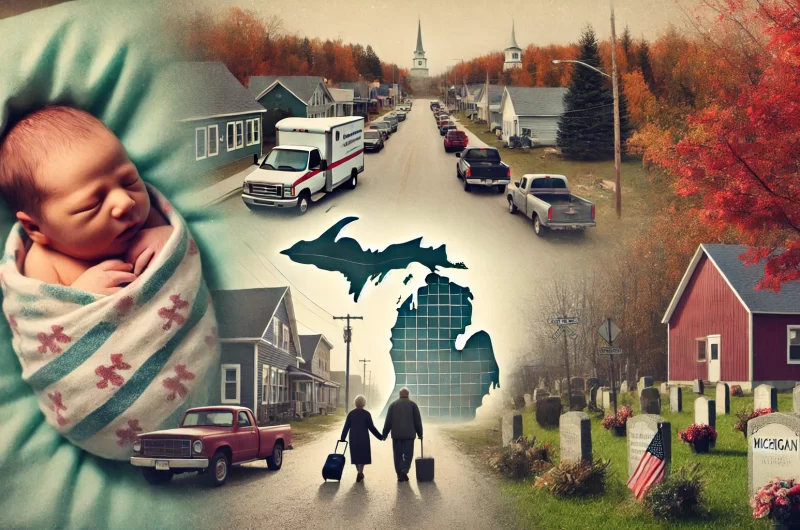

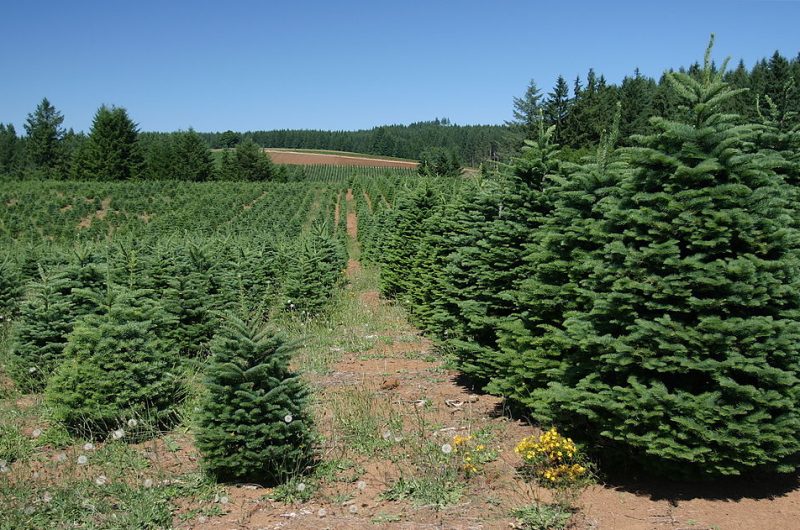

As an Upper Peninsula tribal member with treaty rights to hunt and fish in the region…I hope not. We need to get migration and immigration under control. Tribal treaty rights are ongoing property right obligations of the United States to protect regional resources for use by tribal members. Immigration and climate migration threaten those rights through restricted use of resources, land, diminished water quality and reduced wildlife resources. In my lifetime I have seen local zoning expand and reduce forested areas in the UP. We have recently seen algae blooms for the first time in Lake Superior. The UP does not have the water treatment resources necessary to support an expanded population and protect Lake Superior weater quality. The US government and state of Michigan need to set aside additional acreage for treaty obligations or risk future lawsuits for diminished treaty rights.
It is very sad that it is necessary for Tribal members to sue in order to have the treaties made by the USA. We have an obligation to honor or commitments. There is a lot of room in the UP.
This data should make you feel better:
“The county’s population density was 37.1 people per square mile in 2010 and 36.5 people per square mile in 2020. The county’s land area is 1,809.05 square miles. The county’s population is estimated to be 65,699 in 2023. The population has decreased by 1.5% since 2010. The county’s median household income increased by 1.14% between 2019 and 2020.
Marquette County, Michigan – U.S. Census Bureau QuickFacts
So the population is decreasing. With the price of land, which would be driven up as population increased, I expect you may get some Snowbirds with money but as I posted earlier we didn’t go to Marquette County due to the distance we would be from our kids and grandkids.
I hope it is not necessary for you to sue but I can understand your position.
We need more people up here and better officials that let more housing be built for the people that run Marquette, the workers. My 24 yr old spent 2 months looking for a affordable place in Marquette and had decided to move because there is none. Home owners that gouge college kids continue that when the college kids leave with crappy housing no less. Luckily my kid was able to move in with a buddy on the base.
The problem isn’t local “officials”, zoning (which provides for many places new housing can be built) or laws, it is cost and the gap between cost and what people can afford – builders would be building to meet demand if developers could turn a profit on new housing. Not many people earn the kind of money needed to finance a new detached home anymore, now coming in at an average of over $400,000. And even many docs, lawyers, and surgeons can’t find suitable housing in Marquette because of the shortage of quality housing available on the resale market. You did identify a big part of the issue – rentals and college students. Over 50% of the housing stock in MQT is now being rented, much of that is run-down and managed by absentee landlords for steady income, and with a large population of students that live off campus that is going to be slow to change, as some of those landlord-owner rehab their thrashed old homes to sell or rent to people who can pay higher rents.
Wait! Your data seems to show that the inflow of people is NOT because of climate. In 2020-2021, the largest inflow of people came from the midwest, where the climate is most similar to the north. And although you lump the south and western states together to arrive at a 47% increase, one can’t really say that western states (except for California–and is Arizona a western state or a southern state? ) have climate issues. The fact that the largest influx is from the midwest would seem to indicate that the majority of households are not moving to a more stable climate. Why are they moving north? Probably for a number of reasons–better jobs, better skiing, family roots, nice bike trails, more nature, less crime, and so on. It is probably best not to interpolate the reason for a move from the above census data . A more rigorous approach would be to find a sample of these new residents and interview them.
Who even has the freedom to move somewhere based on resiliency to climate change? Most of us are beholden to our careers which dictate where we live. The retired might have a little more choice, but are probably looking for affordability on their fixed income.
I live in Southern Michigan but have a love of the UP dating to the 60s when my Uncle was stationed at Sawyer AFB. I would have located in Marquette if it were not for kids and grandkids who are over 200 miles south of us now. Marquette would put them out of reach to visit on any but an annual basis.
Yoopers live in Paradise! I fear Lisa’s comment on gentrification is true. Housing prices are up everywhere and we are not building housing Joe Average can afford in any part of the USA. Very sad.
A stable population in the U.P. is a good thing. There are far too many people in the world, North America, and the USA already. Some people say we need more workers, but what we need is a more equitable economic/pay structure and tax system, not the importing of millions more so that the well to do can have cheaper nannies, landscapers and tradesmen. (and someone to tell the Pope that birth control is not intrinsically evil as current Catholic doctrine is now written)
Spot on! A steady-state economy is ideal, but it’s hardly an option due to no leadership around the issue of overpopulation globally. The US has seen a nice drop in reproductive rates, but the nation will continue to grow for the foreseeable future, mainly by immigration – unless immigration policies change. So, we have to expect and plan for population growth even in places like MQT where there isn’t much growth but people want to live and are probably going to come in larger numbers in the not-so-distant future.